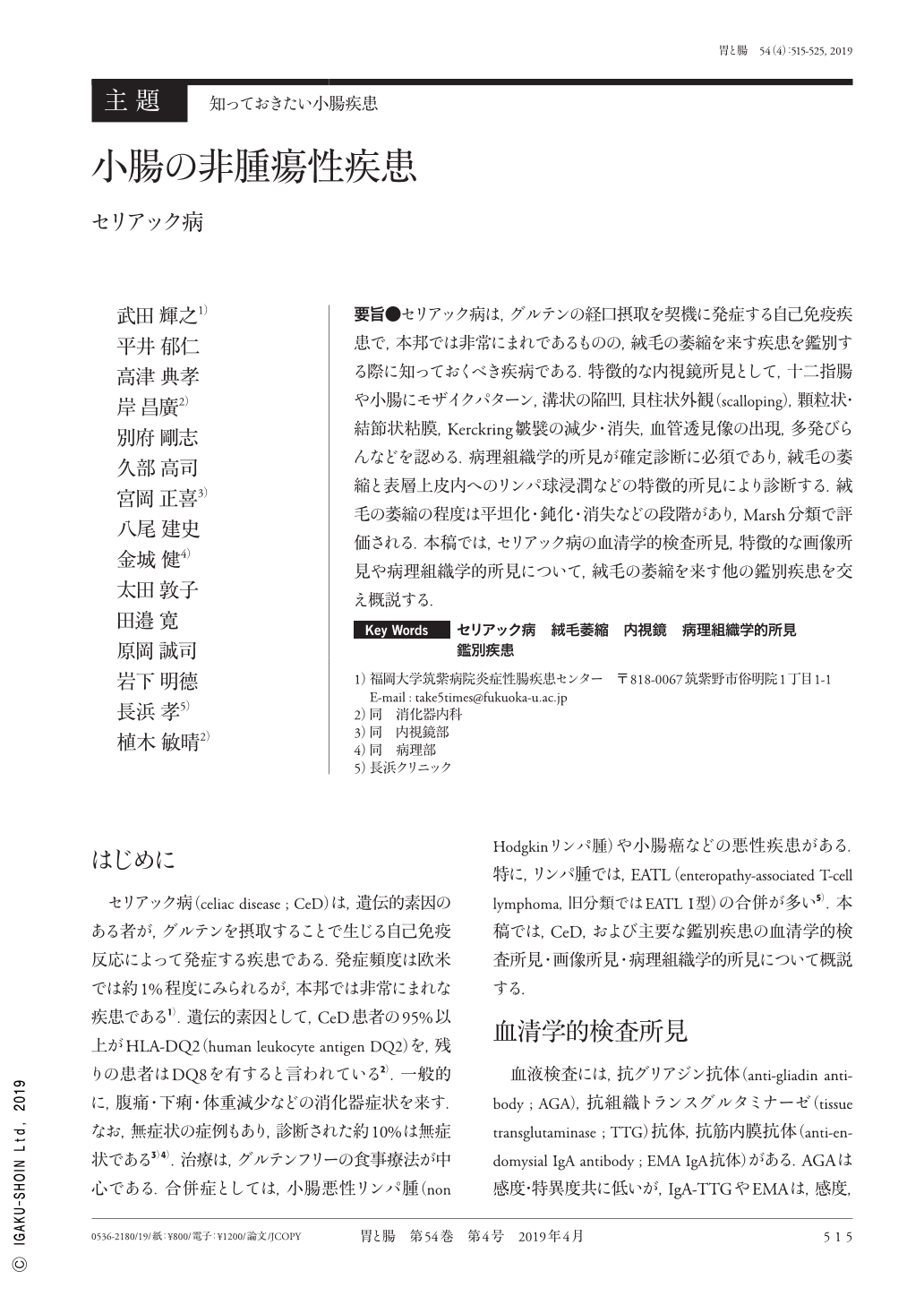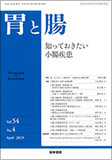Japanese
English
- 有料閲覧
- Abstract 文献概要
- 1ページ目 Look Inside
- 参考文献 Reference
- サイト内被引用 Cited by
要旨●セリアック病は,グルテンの経口摂取を契機に発症する自己免疫疾患で,本邦では非常にまれであるものの,絨毛の萎縮を来す疾患を鑑別する際に知っておくべき疾病である.特徴的な内視鏡所見として,十二指腸や小腸にモザイクパターン,溝状の陥凹,貝柱状外観(scalloping),顆粒状・結節状粘膜,Kerckring皺襞の減少・消失,血管透見像の出現,多発びらんなどを認める.病理組織学的所見が確定診断に必須であり,絨毛の萎縮と表層上皮内へのリンパ球浸潤などの特徴的所見により診断する.絨毛の萎縮の程度は平坦化・鈍化・消失などの段階があり,Marsh分類で評価される.本稿では,セリアック病の血清学的検査所見,特徴的な画像所見や病理組織学的所見について,絨毛の萎縮を来す他の鑑別疾患を交え概説する.
Celiac disease, an autoimmune enteropathy, is caused by oral ingestion of gluten. Although rare in Japan, celiac disease merits elucidation as one of the diseases causing villous atrophy. The typical endoscopic findings of celiac disease are mosaic-patterned mucosa, deep mucosal grooves, scalloping, nodular mucosa, decline or loss of folds, visible submucosal vessel on a background of fold loss, and multiple erosions in the duodenum or small intestine. Pathological examination is imperative for definitive diagnosis, characterized by villous atrophy and elevated lymphoplasmacytic infiltration in the lamina propria. In addition, flattening, blunting, or absence in the degree of villous atrophy is assessed by the Marsh classification. This study aims to illustrate representative images and pathological findings of celiac disease with other differential diseases causing villous atrophy.

Copyright © 2019, Igaku-Shoin Ltd. All rights reserved.


